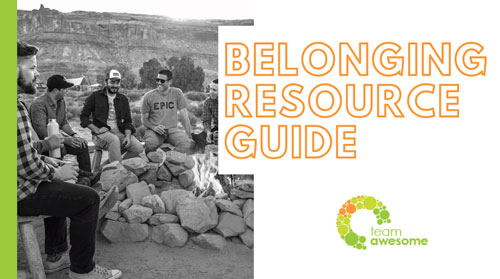I have heard a lot of coaching clients, friends and colleagues all traveling down a similar path lately; the path of interpretation. Of course, it is totally normal for us as human beings to take data points that we pick up very quickly (and often unconsciously) and turn them into helpful information. This is how we are wired for survival, right? We see that a wild boar is over there, we assess that it looks aggressive, and we run to avoid being attacked.
Where we sometimes lead ourselves astray is when those data points don’t actually turn into “helpful” information but merely interpreted stories that we tell ourselves to fill in the gaps between what we believe to be true. Because we are often doing this instantaneously and below the surface of our conscious awareness, we tell ourselves all sorts or stories about who we are, who other people are and what is going on around us. If we were able to be aware of it and stop ourselves before we took that story as truth, we might just find out that we created a whole lot of fiction that was (A) poorly written and (B) holds ourselves back in some way.
Interpretations are one of the main internal blocks that allow us to get in our own way. You can identify an interpretation in your own internal dialogue when you find yourself filling in a story around a few observations. For example, let’s say that you are walking down the hallway at work and you see a co-worker that normally greets you. Today she walks right by you without making eye contact or saying hello. Your brain immediately turns on you and you say to yourself, “Why didn’t she say hi to me? She must be mad at me about something. What did I do?” This is your brain on interpretations.
In reality, perhaps your coworker was totally distracted with their own thoughts. Maybe she had just received a call that a loved one was in the hospital. Or possibly she really need to get the bathroom without chatting about the weather with you. It doesn’t really matter why, you don’t know and you don’t need to make up the story. Think how much time you might now spend ruminating over what you might have done wrong to upset them, how you are going to fix it, or what it all means.
So, how do we stop creating interpretations to fill in the holes of the story around us? The first step is, of course, awareness. Being able to notice in the moment or assess shortly after the fact that you created an interpretation of a situation is hugely helpful in adjusting your mindset. Once you are aware that you have made an interpretation you can ask yourself, “What might be another possibility?” Or ask, “What would someone with a totally opposite viewpoint say about this?” Simply identifying another 2-3 possible explanations helps your brain see that the story you made up might not be true and that if there are a few possible options, there are likely endless possible options. Now you are in a place of possibility instead of seeing only one explanation, or binary options from which to choose.
I know what you are thinking. But sometimes you like the story you make up! You thrive on the drama or you think you must be right. And maybe sometimes you are right. And it can feel good in the short-term when we solve the mysteries of life for ourselves with our internal storytelling.
And, if you were to consciously track all of the times you created interpretations that stopped you from moving forward, held you back from taking action or cluttered your mind with low energy thoughts, you would likely find that are spending an inordinate amount of your own energy blocking yourself from joy and progress.
In the example of the coworker, if it was a persistent issue you could of course approach them with your observations to find out what you might have happened to upset them, or if a relationship repair is in order. You could simply note that they might be having an off day or even go so far as to try and help them turn it around. All of these options are available without fretting the rest of the day about what you did to put that relationship in jeopardy, what she thinks about you, or getting mad that she was rude.
If you would like to try it for yourself – keep a journal where you track all of your interpretations for a week. Then note where that thought came from, and a few possible options for new thoughts that could be more powerful. Then choose a more positive viewpoint that reserves your mental space and internal dialogue for more important and more meaningful discussion. You might even interpret that as awareness and progress.
About the author:
Katie Rasoul is the Chief Awesome Officer for Team Awesome, a leadership coaching and culture consulting firm. Find out more by visiting www.teamawesomecoaching.com or join the Team Awesome Community for awesomeness coming straight to your inbox. Follow Team Awesome on Facebook and Twitter, and Katie Rasoul on LinkedIn and Instagram.



Interesting article to consider.
It is also an advantage to think of others first instead of thinking “my world and all it involves. In service toward others is best.
I’m curious as to why the picture was chosen for this article? Maybe your own “story” is being revealed here? Perhaps a non directional photo would have been better.